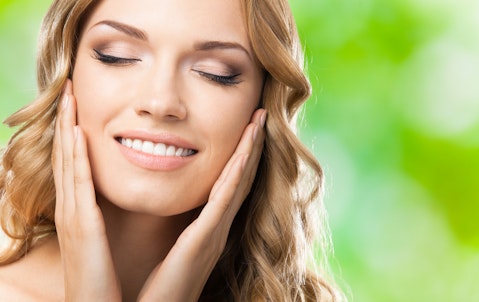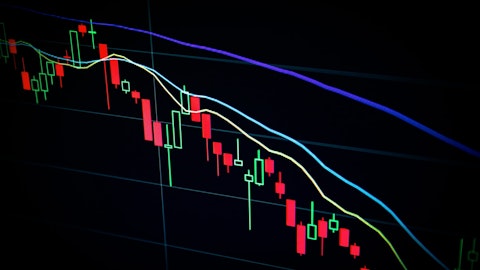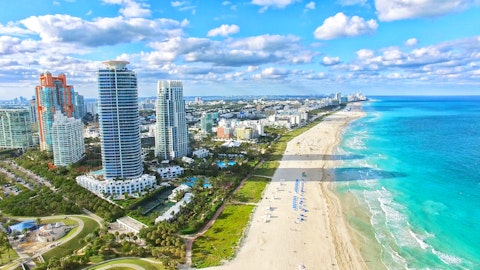In this article, we will be taking a look at the 20 countries with the world’s best skin. If you do not want to learn about the trends in skincare industry, head straight to the 5 Countries With The World’s Best Skin.
Regarding skin health and beauty, certain countries are renowned for their exceptional skincare practices, natural remedies, and cultural emphasis on wellness. From Korea’s groundbreaking innovations in skincare technology, Brazil’s devotion to natural ingredients, and Japan’s centuries-old beauty rituals, each nation boasts its unique approach to achieving radiant and healthy skin.
Navigating Geographic Influences and Financial Dynamics in the Skincare Industry
The global skincare industry is profoundly influenced by geographic factors, which impact skin quality and shape the financial dynamics of the market. Geographic location is pivotal in determining skin quality, owing to diverse climate conditions, environmental factors, and cultural practices. For instance, regions with high UV exposure, like Australia, may experience increased rates of skin cancer, necessitating products with higher SPF. Conversely, colder climates may demand more moisturizing products to combat dryness.
Urban environments with elevated pollution levels can lead to skin issues such as premature aging, underscoring the need for skincare products that shield against environmental stressors. Moreover, variations in water quality, with hard water prevalent in certain regions, can strip the skin of moisture and oils, resulting in dryness and irritation. Additionally, local diets and lifestyle choices significantly impact skin health, with diets rich in antioxidants and omega-3 fatty acids often found in coastal regions with access to fresh seafood, contributing to improved skin quality.
Regarding financial statistics and market growth, the global skincare market is projected to reach USD 273.3 billion by 2031, growing at a Compound Annual Growth Rate (CAGR) of 6.7% from 2022 to 2031. North America constituted 28 percent of the cosmetic market worldwide in 2022, but Asia-Pacific is anticipated to generate the highest revenue in the skincare market by the end of 2031. The luxury beauty market is expected to double from approximately $20 billion to around $40 billion by 2027. Furthermore, the online segment of the distribution channel has secured a significant share of the global skincare market.
Skin-related studies and emerging trends underscore the importance of geographic diversification in the skincare industry. Consumer preferences are evolving, with a growing demand for organic and eco-friendly products. Companies like Eskafil, The Ordinary, and Huda Beauty are investing in innovative products tailored to specific regional needs, such as pollution protection in urban areas or high-moisture formulations for arid regions.
Moreover, there is a noticeable cultural shift towards organic and herbal skincare, driven by increased awareness of the adverse effects of synthetic chemicals. These trends highlight the necessity for skincare businesses to adapt their offerings according to geographic variations and consumer preferences to thrive in the competitive global market.
Transformative Trends in the Skincare Industry: From Hyper-Personalization to Sustainability and Inclusivity
The skincare industry is experiencing significant evolution driven by technological advancements, shifting consumer preferences, and the emergence of global brands leading innovation. Recent innovations emphasize hyper-personalization and biotech advancements, utilizing AI and AR technologies to customize skincare products for individual needs. Companies like Pure Culture Beauty and Dr. Elsa Jungman are pioneering at-home skin tests for tailored skincare formulas, while biotech innovations focus on sustainability to meet the rising demand for eco-friendly beauty products.
Among the industry leaders is The Beauty Health Company (NASDAQ:SKIN), renowned for its flagship brand, Hydrafacial, offering innovative skincare solutions across over 90 countries. The Beauty Health Company (NASDAQ:SKIN)’s noteworthy products include Hydrafacial’s hydradermabrasion procedure and SkinStylus microneedling device, praised for their efficacy and safety. The Beauty Health Company (NASDAQ:SKIN)’s recent developments such as the launch of the MyBeautyHealth platform, a strategic partnership with Dr. Dennis Gross Skincare, and a significant 10% net sales growth in Q3 2023, particularly in the APAC and EMEA regions, underscore the company’s commitment to advancement.
Estée Lauder Companies Inc. (NYSE:EL) is another global beauty leader, boasting transformative skincare brands like La Mer and Dr.Jart+. Estée Lauder Companies Inc. (NYSE:EL)’s recent accolades highlight the company’s dedication to corporate transparency and climate performance. Financially resilient, with a market capitalization of $53.76 billion, a price-to-earnings ratio of 109.58, and a 1.86% dividend yield, Estée Lauder Companies Inc. (NYSE:EL) demonstrates investor confidence in its prospects.
While the U.S. and China continue to dominate the skincare market, there’s a notable shift towards diversification, with emerging markets like the Middle East and India gaining significance due to economic modernization and rising disposable income. Wellness and self-care are integral to skincare, reflecting broader consumer trends towards health and sustainability. Products blending beauty with wellness are gaining traction, mirroring consumer behavior.
Consumer preferences are evolving towards multifunctionality, sustainability, and inclusivity. Brands increasingly offer products with multiple benefits while adhering to natural and organic formulations. Inclusivity is also a key focus, with demands for diversity in beauty products and advertisements. International companies like L’Oréal, Estée Lauder, and Fenty Beauty by Rihanna are responsible for skincare innovation, focusing on research, inclusivity, and sustainability.
Consumers are increasingly seeking skincare products that enhance appearance and promote overall skin health. This trend is evidenced by the rise in demand for clean, organic, and natural skincare products, as health-conscious consumers prioritize formulations free from harmful chemicals and rich in botanical and plant-based ingredients.
The skincare market is also influenced by cultural and regional preferences, with products tailored to specific needs, such as whitening products in Asian markets or formulations designed for different climates. Specialized treatments like exfoliants, masks, and serums addressing specific concerns are also gaining traction, catering to consumers seeking intensive care.
Regarding sales channels, e-commerce is expected to experience rapid growth, with a projected annual growth rate of 12% between 2022 and 2027. Traditional channels like specialty retail, grocery retail, and drugstores are also anticipated to grow post-pandemic.
The skincare industry in the US stands as a formidable market, boasting a broad consumer base spanning various demographics. Recent surveys reveal that a substantial proportion of Gen Z (41%) and millennials (40%) actively purchase skincare products, underscoring the significant presence of younger individuals as primary consumers in this sector. Furthermore, women aged 18 to 41 emerge as the focal demographic for skincare marketers. However, it’s crucial to recognize that the industry’s appeal transcends specific gender or age categories.
Indeed, the skincare market in the US exhibits remarkable breadth and dynamism, commanding a substantial 42% share within the broader beauty industry. This dominance surpasses even that of hair care (22%) and makeup (18%) combined. This data underscores the industry’s resilience and its enduring relevance in meeting consumers’ diverse needs and preferences across the spectrum.

vgstudio/Shutterstock.com
Our Methodology
Our methodology has meticulously ranked countries based on a consensus to determine those with the world’s best skin, which involved evaluating multiple metrics, including dietary habits, genetic predispositions, environmental factors, and the cosmetics markets in these countries. Considering these factors, we have arrived at a definitive ranking of countries renowned for their exceptional skin quality, presented in ascending order of scores.
Here is our list of the 20 countries with the world’s best skin.
20. Thailand
Total Score: 0.05
Thailand’s skincare market, valued at $2.57 billion in 2021, is a significant segment within the beauty industry, expected to grow annually by over 3%, making Thailand stand among the countries with the world’s best skin. Major categories include body care, depilatories, facial care, hand care, and makeup remover. Revenue in the broader Beauty & Personal Care market is forecasted to reach US$6.67 billion by 2024, with consistent growth driven by rising disposable income and the popularity of natural products.
19. Germany
Total Score: 0.1
Germany. one of the top countries with the best skin in the world has a robust skincare market, with the beauty and personal care industry expected to reach US$20.27 billion by 2024. In 2022, the skincare market was valued at EUR5.41 billion ($5,693.6 million) and is projected to grow at a CAGR of over 4% from 2022 to 2027. Berlin leads in skincare, with facial care as the largest category and para pharmacies/drugstores as primary distribution channels. The demand for natural beauty products is rising, driving consumers towards higher quality and greener options.
18. The United Kingdom
Total Score: 0.15
The skincare market in the United Kingdom is thriving, valued at GBP 3.1 billion in 2021, and is projected to grow at a CAGR of over 1%. Significant segments include body care, depilatories, facial care, hand care, and makeup remover, with facial care leading the market. Key cities contributing to this market include London, Manchester, Birmingham, and others. The skin treatment market is expected to reach US$4.86 billion by 2028, driven by rising disposable income and demand for premium skincare products.
17. Brazil
Total Score: 0.2
Brazil is a significant player in the global beauty and personal care market, with a thriving skincare industry. The country’s beauty and personal care market is projected to generate USD 26.62 billion in revenue by 2024, growing at 5.85% annually. Skincare products, valued at $3.88 billion in 2017, are the largest segment driven by aging populations and technological advancements. Premium skincare products, free from harmful chemicals, are gaining popularity, leading to product premiumization.
16. Canada
Total Score: 0.25
Canada stands among the top countries with best skin. It’s skincare market is a significant sector within the cosmetics industry, poised for steady growth. In 2021, the cosmetics market in Canada generated $1.24 billion, with skincare representing about 40% of this market. Facial products alone achieved sales of $900.2 million, with Canadians spending an average of $22 per month on skincare. By 2024, the Beauty & Personal Care market is expected to reach $8.83 billion, with skincare projected to grow by 2.09% from 2024 to 2028.
15. Hong Kong
Total Score: 0.3
14. Qatar
Total Score: 0.35
Qatar’s cosmetic products market thrives due to rising disposable incomes and changing consumer preferences. Key financial statistics reveal that Qatar’s Beauty & Personal Care market revenue is projected to reach US$572.00 million in 2024.. The market features domestic and international players, including L’Oréal S.A, The Estée Lauder Companies, Procter & Gamble Co., and Shiseido Co. Ltd.
13. UAE
Total Score: 0.4
The UAE, a top country with the best skin in the world, boasts a thriving skincare market with significant financial projections. Expected revenue for the Skin Care market in 2024 is US$329.50 million, with an annual growth rate. The Beauty & Personal Care market is forecasted to reach US$1,218 million in 2024 despite a slight decline. Additionally, the UAE Cosmetic Market is estimated to grow at a CAGR of 5.80% until 2030.
12. Turkey
Total Score: 0.45
Turkey’s skincare market is thriving, with an estimated value of $400.74 million by 2028, boasting a CAGR of 7.71%. The industry encompasses segments like body and facial care, distributed through multiple channels, including e-commerce. Financial projections indicate that Turkey’s broader beauty and personal care market is expected to generate $7.57 billion in revenue by 2024, with an annual growth rate of 4.51%.
11. Netherlands
Total Score: 0.5
The skincare market in the Netherlands, one of the countries with the world’s best skin, was valued at $893.6 million in 2021 and is projected to grow at a CAGR of over 3% by 2026, with facial care leading the market. Key players include L’Oreal S.A., Unilever, Beiersdorf Ag, Procter & Gamble, and The Estee Lauder Companies Inc. Amsterdam is the largest skincare market in the country, followed by Rotterdam.
10. Lebanon
Total Score: 0.55
Lebanon’s skincare market is a significant segment within the beauty and personal care industry and is expected to reach a volume of $91.93 this year. In 2024, Lebanon’s overall beauty and personal care market is forecasted to generate US$339.10 million. The skincare products market is anticipated to grow at a CAGR of 8.1% from 2021 to 2027, driven by rising disposable income and expanding distribution channels.
9. Russia
Total Score: 0.6
Russia stands ninth among the top countries with the best skin. It’s beauty and personal care market is thriving, with an estimated revenue of USD 16.34 billion in 2024 and expected growth to USD 10.70 billion by 2028. Factors driving this growth include high disposable income and a growing demand for natural products. The skincare segment, led by facial care, is forecasted to grow significantly, with local brands gaining popularity for their affordability and focus on natural ingredients.
8. Finland
Total Score: 0.65
Finland’s skincare market is thriving, with the face skincare segment projected to reach US$242.3 million in 2024, growing at 2.95%, making Finland stand eighth among the countries with the world’s best skin.
7. Denmark
Total Score: 0.7
Denmark’s skincare industry is renowned for its focus on natural and sustainable ingredients, innovative formulations, and high-quality standards. Danish brands prioritize clean beauty and transparency, utilizing Nordic ingredients and advanced technology.
6. Sweden
Total Score: 0.75
Sweden stands sixth among the countries with the world’s best skin. It’s skincare market thrives with a focus on beauty and personal care products, projected to grow at a CAGR of 6.68% by 2028. Significant players include L’Oreal S.A., Shiseido Co. Ltd, and Estee Lauder Companies Inc. Swedish consumers prioritize product personalization and eco-friendliness, driving industry innovation.
Click to see and continue reading the 5 Countries with the World’s Best Skin.
Suggested Articles:
- 20 Countries with the Highest Rates of Skin Cancer.
- 20 Highest Quality Skincare Brands in 2024.
- 20 Biggest Cosmetics Brands in the World.
Disclosure. None: The 20 Countries with the World’s Best Skin is originally published on insider Monkey.




